Bangkok's Cultural Odyssey: Landmarks Unveiled
Embark on a captivating journey through Bangkok's vibrant history and culture on this free walking tour. Discover iconic landmarks and hidden gems along the way!
Time
3 Hours
Stops
9 Places
Distance
5.1 km
Wat Pho (Temple of the Reclining Buddha)
Start your journey at Wat Pho, home to a magnificent 46-meter-long reclining Buddha statue, highlighting the city's rich history and traditional Thai architecture.
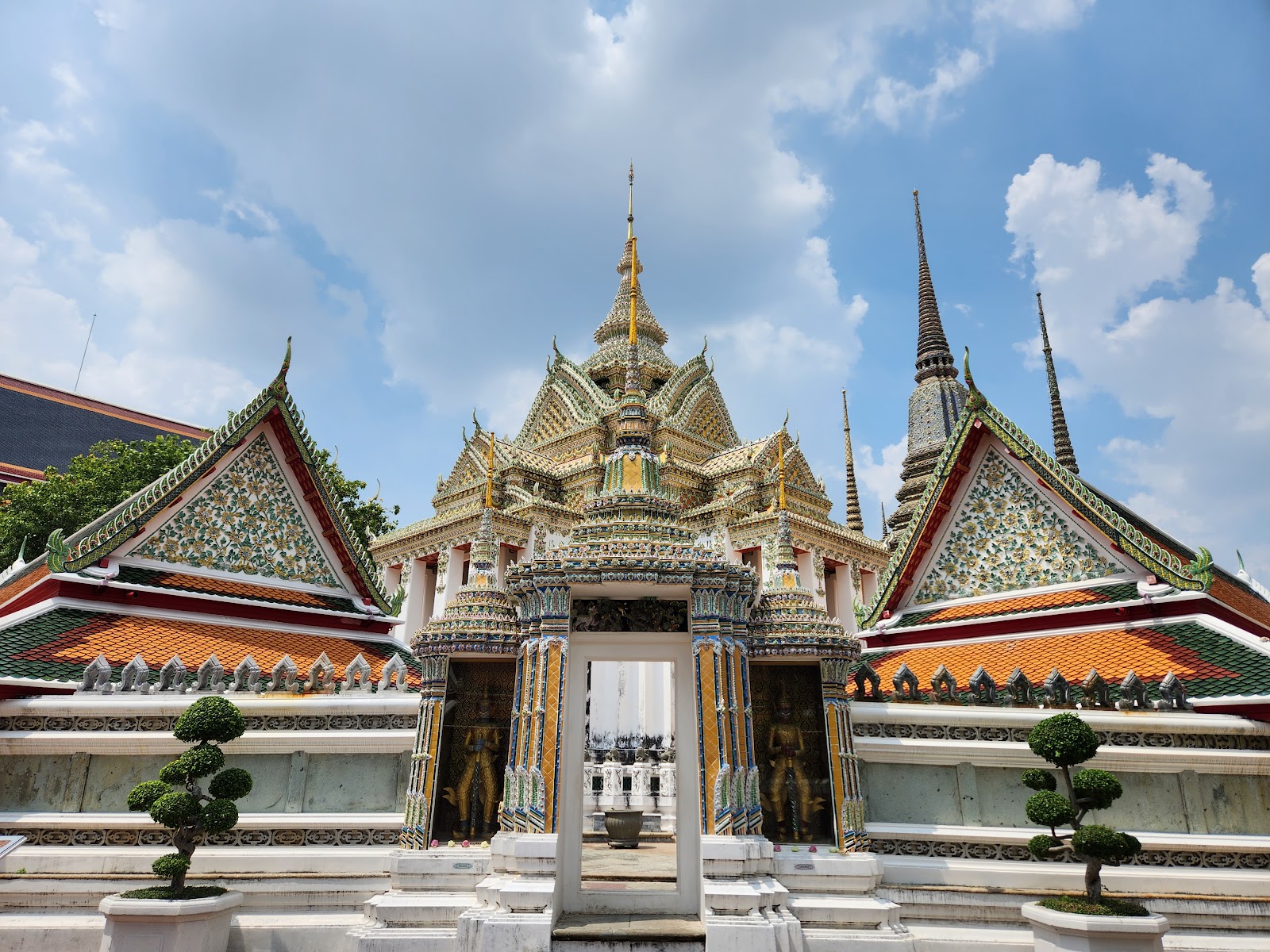
Wat Pho (Temple of the Reclining Buddha) (Source: Google Maps)
Wat Pho, home to the spectacular 46-meter-long reclining Buddha statue, is one of Bangkok's oldest temples, dating back to the 16th century. It showcases traditional Thai architecture, including intricate murals and impressive chedis. This temple is also known as the birthplace of traditional Thai massage, offering a unique blend of spirituality and wellness. The reclining Buddha itself is adorned with gold leaf and mother-of-pearl inlays, symbolizing the Buddha's entry into nirvana. Visitors can explore the serene grounds, which are filled with over a thousand Buddha images, reflecting the temple's historical significance as a center for learning and meditation.
Museum of Siam
Discover Thailand's cultural evolution at the Museum of Siam, where interactive exhibits present the nation's history and identity in a fun and engaging way.
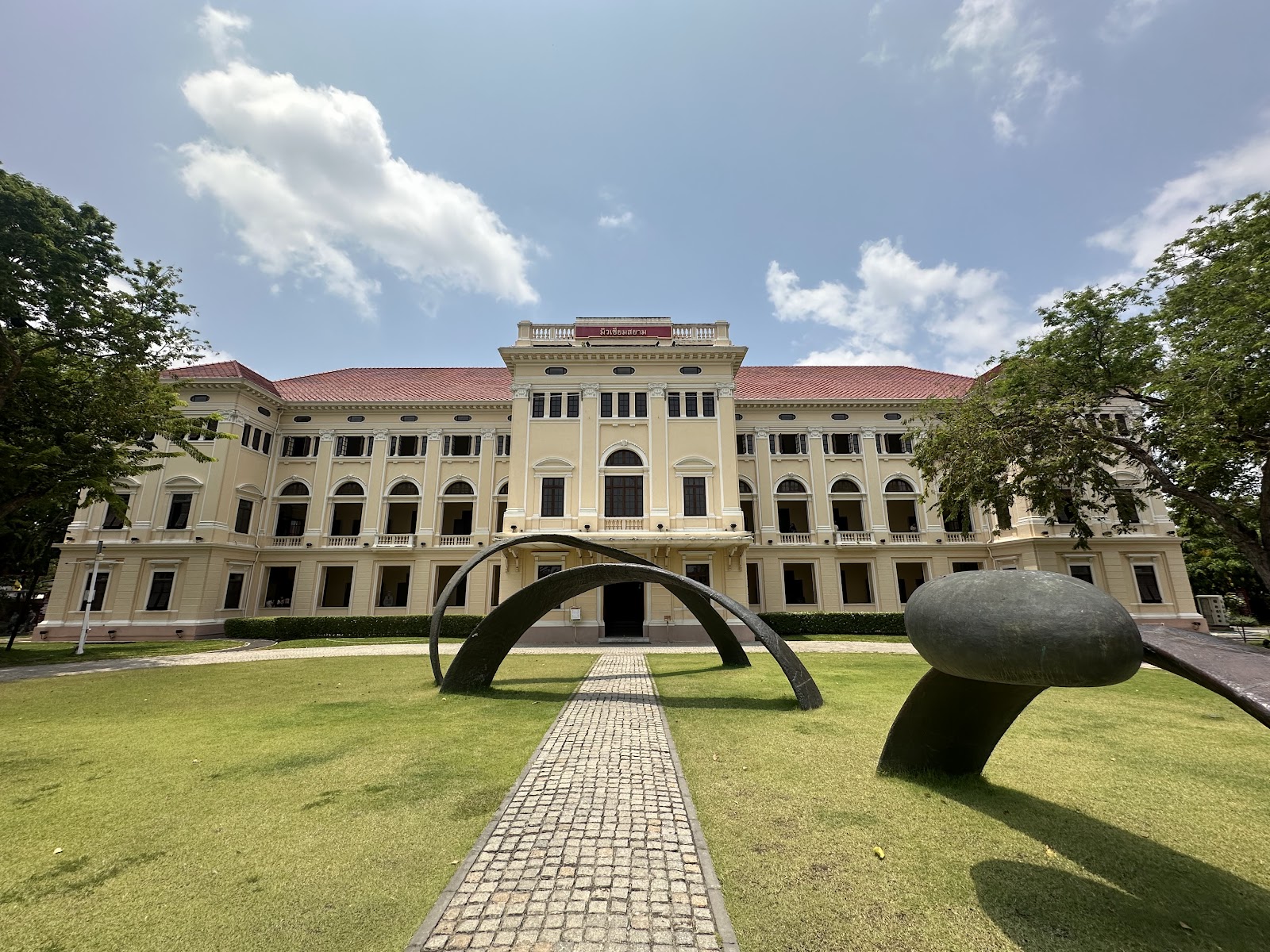
Museum of Siam (Source: Google Maps)
The Museum of Siam provides an engaging exploration of Thailand's cultural evolution. Housed in a historical building that once served as the Ministry of Commerce, the museum features interactive exhibits that invite visitors to delve into the nation's rich history and diverse identity. The displays cover various aspects of Thai culture, including art, language, and traditions, encouraging a deeper understanding of what it means to be Thai. The museum's design incorporates modern technology to create an immersive experience, making it appealing to both locals and tourists. By blending history with contemporary storytelling, the Museum of Siam plays a vital role in preserving and promoting Thai heritage.
Pak Khlong Talat (Flower Market)
Immerse yourself in the colorful and fragrant Pak Khlong Talat, Bangkok’s largest wholesale flower market, bustling with activity and vibrant blooms.
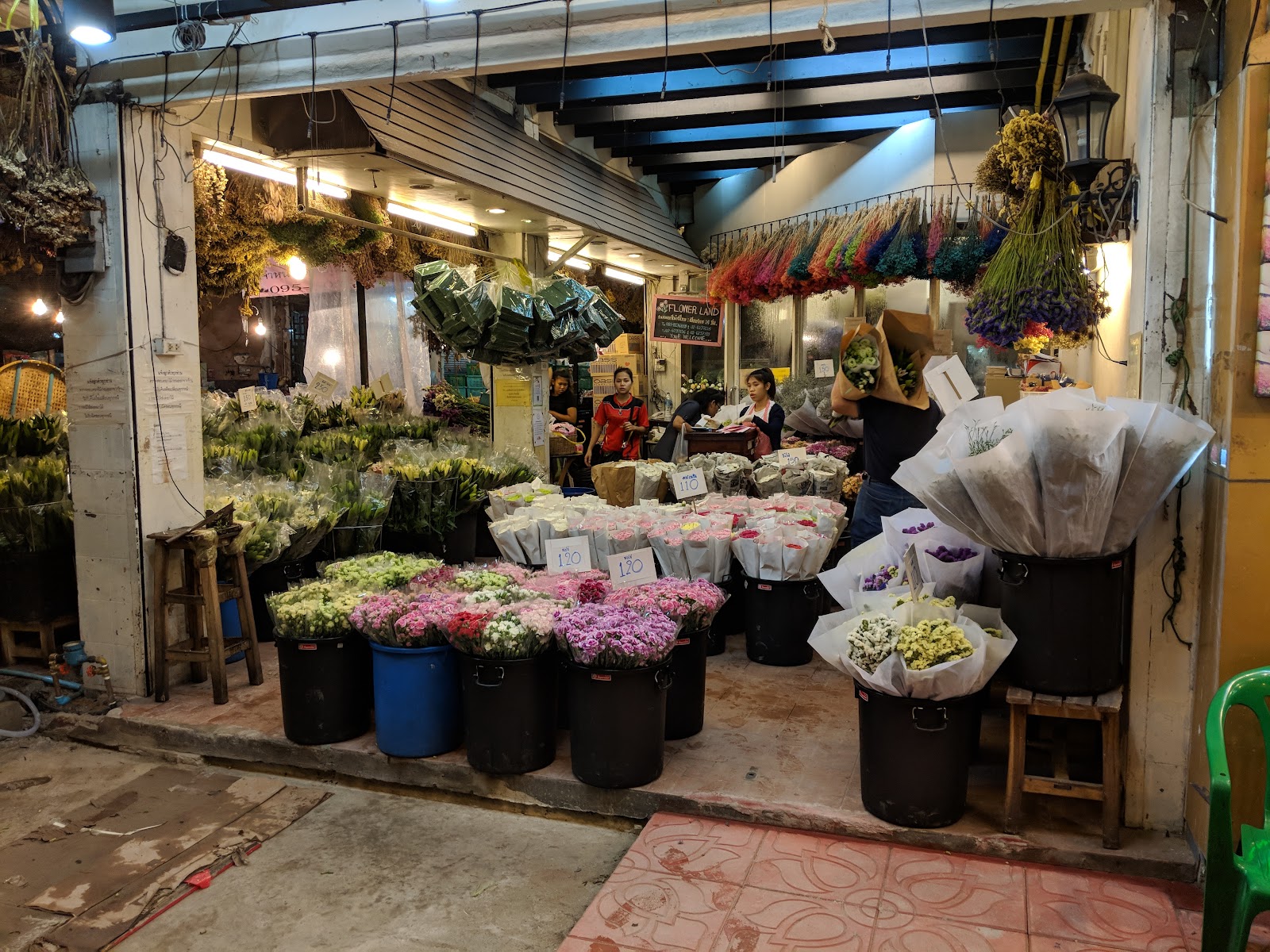
Pak Khlong Talat (Flower Market) (Source: Google Maps)
Pak Khlong Talat, Bangkok's largest wholesale flower market, is a vibrant hub of activity that bursts with color and fragrance. Open 24 hours, it showcases a stunning array of flowers, from traditional marigolds to exotic orchids, catering to local florists and enthusiasts alike. The market is not just a visual feast; it also offers insights into Thailand's floral culture and its significance in festivals and religious ceremonies. Visitors can witness the hustle and bustle of vendors arranging flowers and engaging in lively transactions. The market's lively atmosphere, combined with the beauty of nature, makes it a must-visit destination for anyone looking to experience the heart of Bangkok's local life.
Tha Tien Market
Head to Tha Tien Market to experience the vibrant local life and explore an array of traditional Thai snacks and spices.
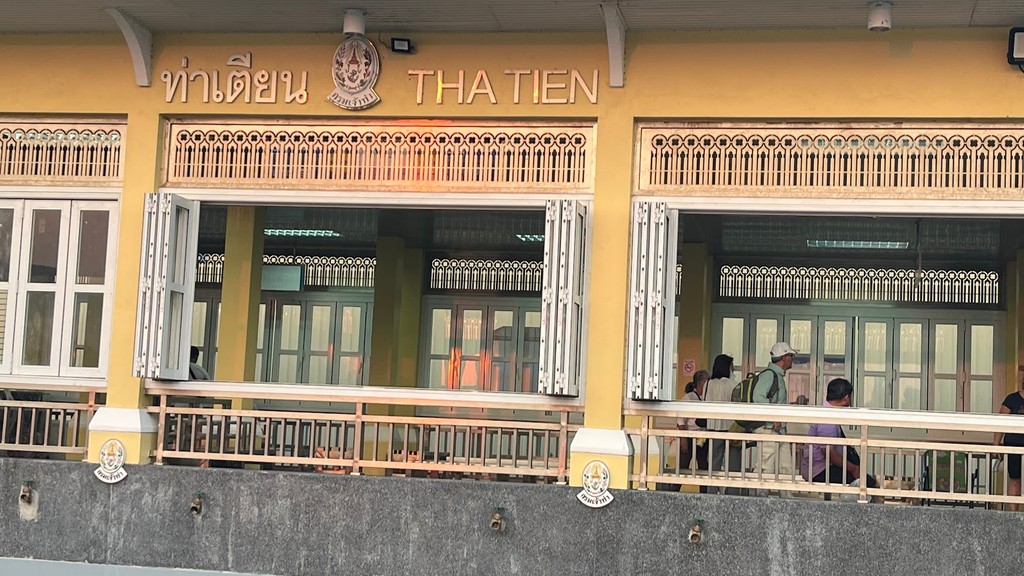
Tha Tien Market (Source: Google Maps)
Tha Tien Market is a bustling local market that offers visitors a taste of authentic Thai life. Known for its vibrant atmosphere, the market features an array of traditional snacks, spices, and fresh produce. It is located near some of Bangkok's most famous temples, making it a popular stop for tourists and locals alike. Here, you can sample local delicacies, shop for unique ingredients, and experience the daily rhythm of the community. The market is also a great place to meet friendly vendors who are eager to share their culinary knowledge. Tha Tien Market captures the essence of Bangkok's street food culture, showcasing the city's rich flavors and culinary traditions.
Wat Arun (Temple of Dawn)
Cross the Chao Phraya River to visit Wat Arun, known for its towering spires and beautiful riverside location, offering a unique perspective of Thai architecture.
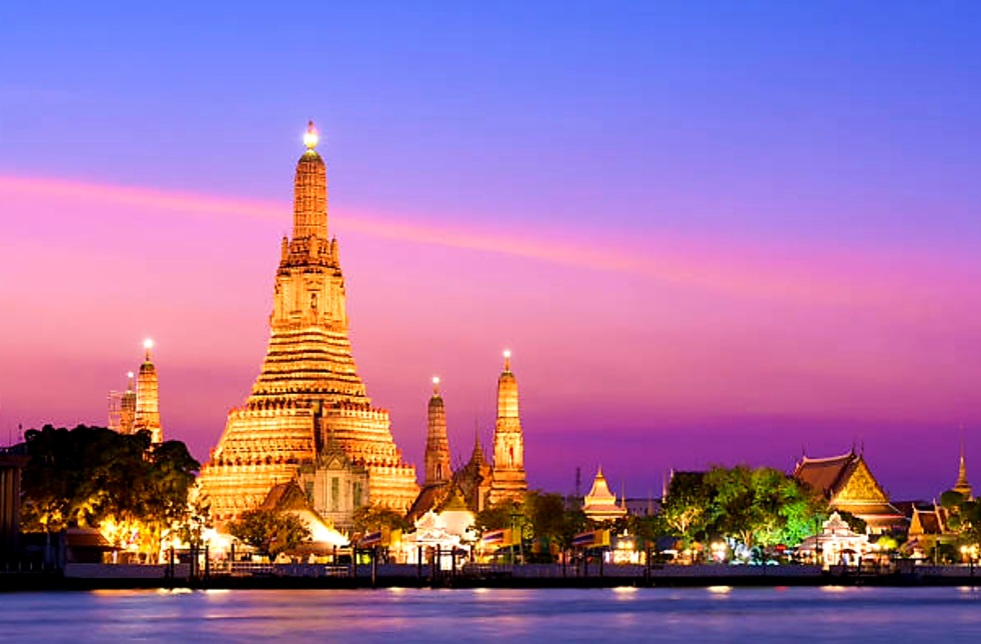
Wat Arun (Temple of Dawn) (Source: Google Maps)
Wat Arun, or the Temple of Dawn, is an iconic symbol of Bangkok, renowned for its stunning riverside location and exquisite architecture. The temple's central spire, or 'prang,' rises majestically to 82 meters, adorned with colorful porcelain tiles that shimmer in the sunlight. It represents Mount Meru, the center of the universe in Buddhist cosmology. Visitors can ascend the steep steps for breathtaking views of the Chao Phraya River and the city skyline. Wat Arun is particularly breathtaking at sunrise and sunset, when the temple is bathed in golden light. This landmark not only showcases the beauty of Thai architecture but also holds deep spiritual significance for Buddhists.
Grand Palace
Just a short walk away, the Grand Palace is an iconic complex that has been the official residence of the Kings of Siam since 1782, showcasing stunning architecture and intricate detailing.
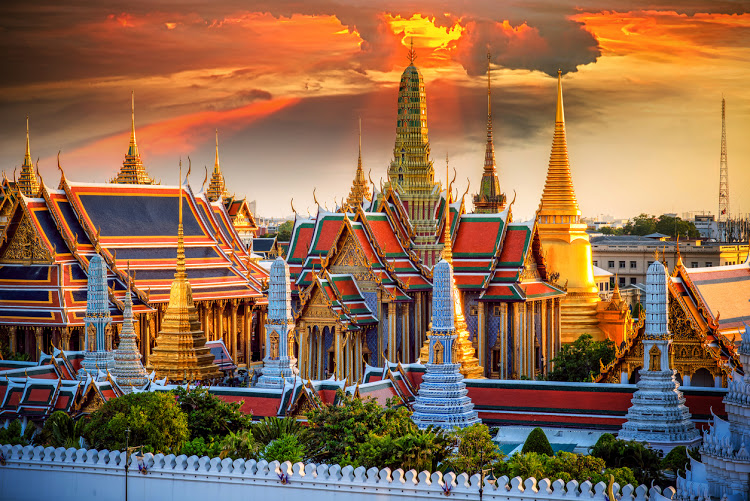
Grand Palace (Source: Google Maps)
The Grand Palace is a spectacular complex that has served as the official residence of the Kings of Siam since 1782. This architectural masterpiece is a stunning blend of traditional Thai design and Western influences. The intricate details of the buildings, with their golden spires and ornate decorations, reflect the grandeur of the Thai monarchy. The complex houses several important structures, including the Emerald Buddha Temple (Wat Phra Kaew), which is regarded as the most sacred temple in Thailand. Visitors can explore the beautiful courtyards, impressive halls, and historical artifacts that tell the story of Thailand's royal heritage. The Grand Palace remains a symbol of Thai culture and history, attracting millions of visitors each year.
Wat Phra Kaew (Temple of the Emerald Buddha)
Located within the Grand Palace, Wat Phra Kaew is regarded as the most sacred Buddhist temple in Thailand, housing the revered Emerald Buddha.
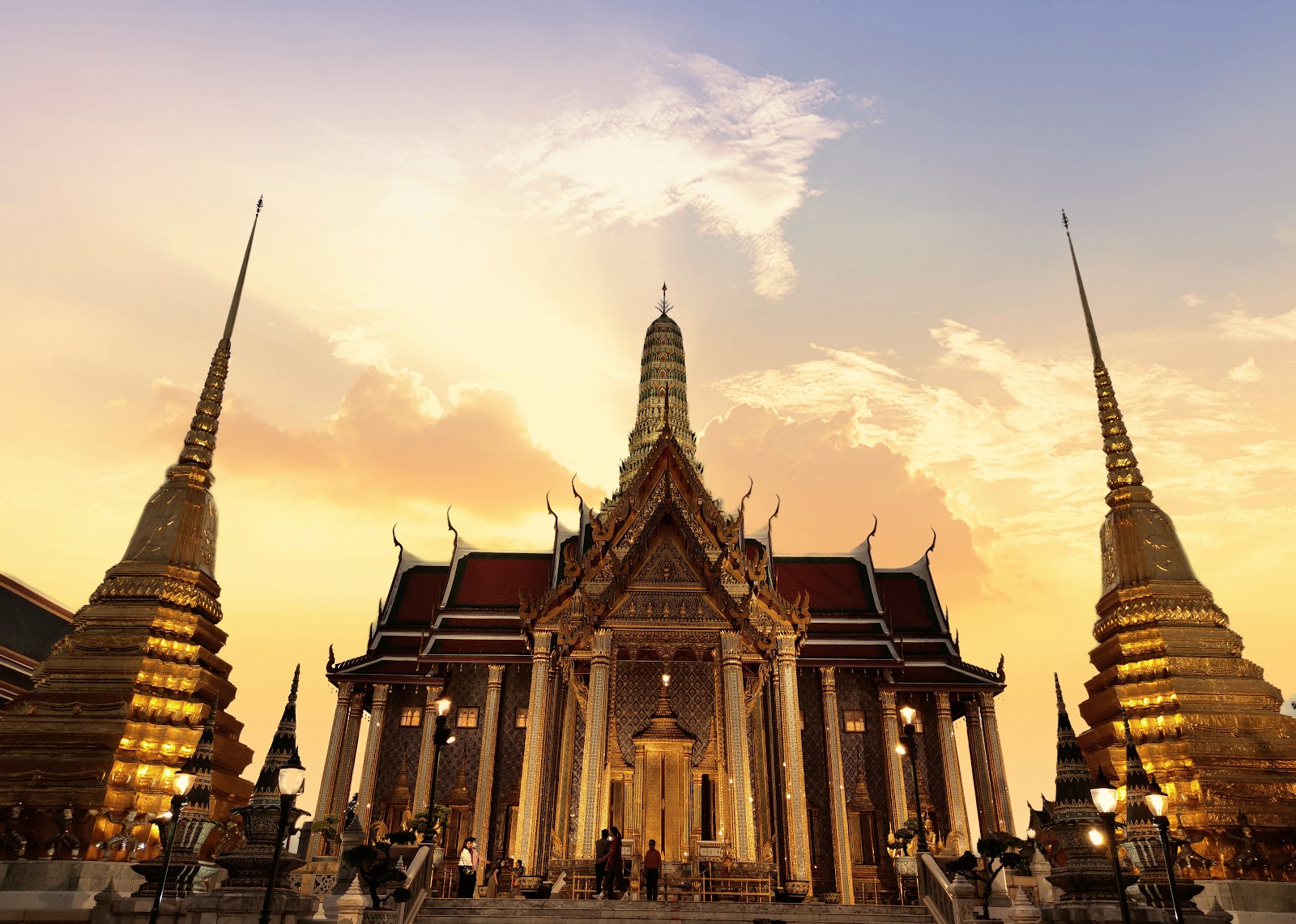
Wat Phra Kaew (Temple of the Emerald Buddha) (Source: Google Maps)
Wat Phra Kaew, situated within the Grand Palace complex, is Thailand's most revered Buddhist temple. It houses the Emerald Buddha, a highly venerated statue believed to bring prosperity and good fortune to the country. Carved from a single block of jade, the Emerald Buddha is adorned with seasonal costumes that are changed by the King of Thailand. The temple's architecture is a stunning example of traditional Thai style, featuring intricate mosaics, golden stupas, and beautifully landscaped gardens. Wat Phra Kaew serves not only as a place of worship but also as a symbol of Thai national identity and spirituality. Its rich history and cultural significance make it a must-visit landmark in Bangkok.
Wat Suthat
Continue to Wat Suthat, one of Bangkok's oldest and largest temples, renowned for its stunning murals and the Giant Swing located nearby.
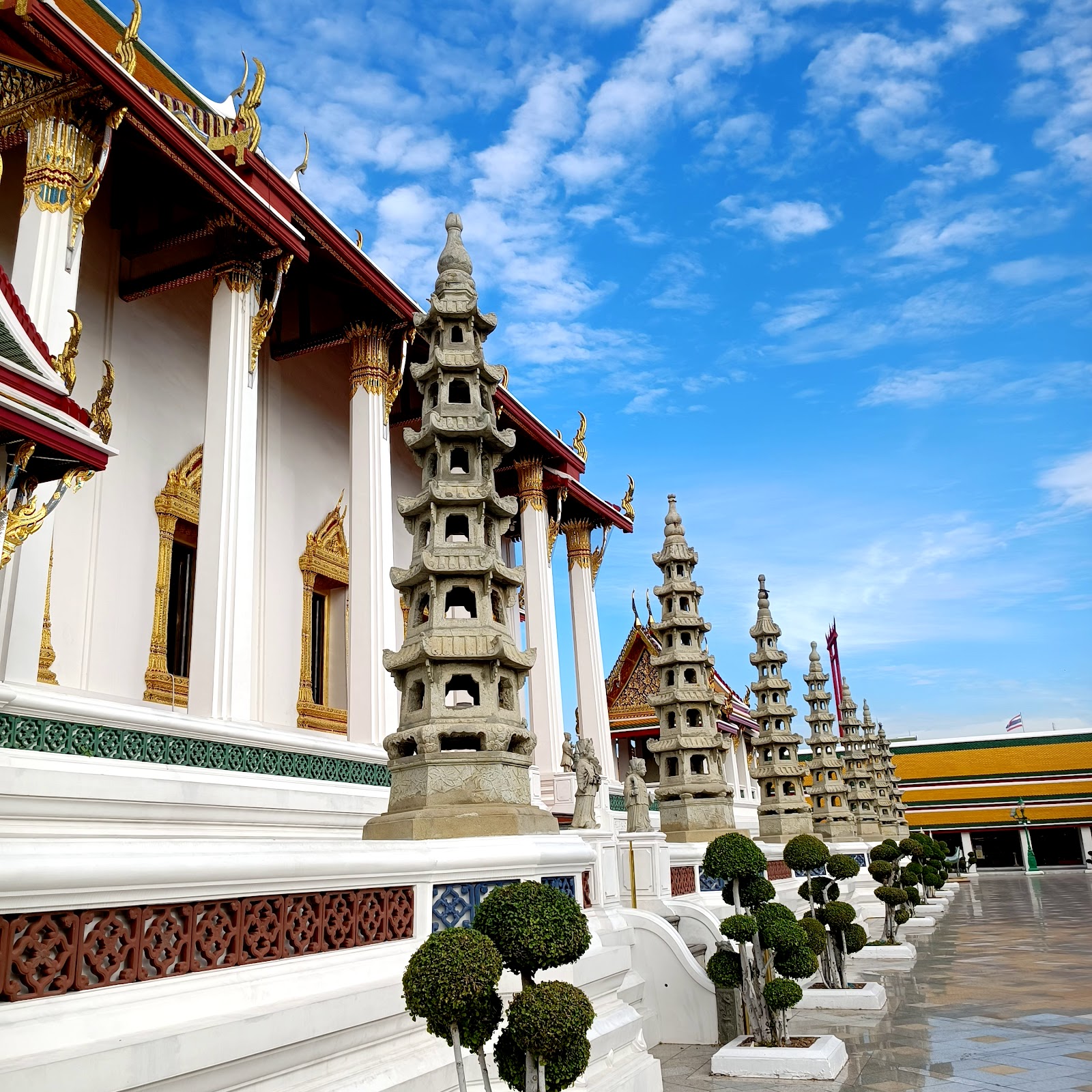
Wat Suthat (Source: Google Maps)
Wat Suthat, one of Bangkok's oldest and largest temples, is renowned for its magnificent architecture and stunning murals. Completed in 1847, the temple features a striking red and gold roof, supported by elegant columns. It houses a large bronze Buddha statue, which is a central figure in Buddhist worship. The temple's walls are adorned with beautiful murals depicting the life of the Buddha and various Buddhist teachings. Nearby, the Giant Swing, a historic religious structure, adds to the temple's cultural significance. Wat Suthat is a tranquil haven amidst the bustling city, offering visitors a glimpse into Thailand's rich spiritual heritage and artistic achievements.
Democracy Monument
Conclude your tour at the Democracy Monument, a significant symbol of Thailand's political history and an architectural marvel on Ratchadamnoen Avenue.
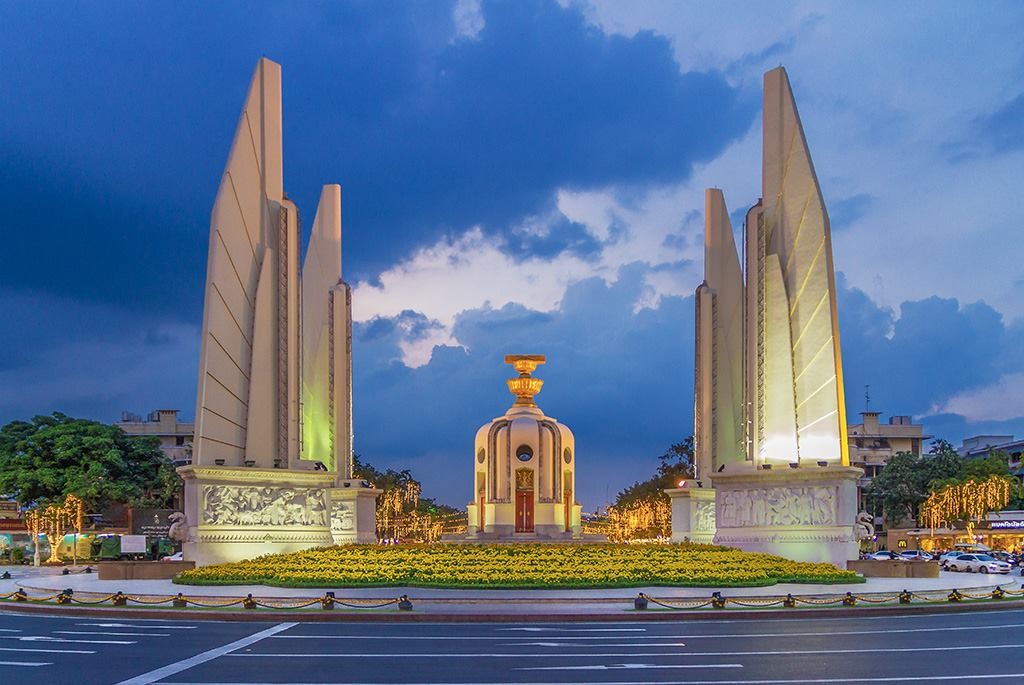
Democracy Monument (Source: Google Maps)
The Democracy Monument is a significant symbol of Thailand's political history, commemorating the 1932 revolution that transformed the country from an absolute monarchy to a constitutional monarchy. Designed by the Thai architect Phra Sook, the monument features a central pedestal surrounded by four towering pillars, representing the four branches of government. The intricate carvings and sculptures depict key events in Thai history, emphasizing the importance of democracy and civil rights. Located on Ratchadamnoen Avenue, the monument serves as a gathering place for political demonstrations and celebrations, reflecting the ongoing evolution of Thailand's democracy. It stands as a powerful reminder of the struggles and triumphs of the Thai people in their quest for freedom and justice.

Your travels, your rules.
Create your own Free Walking Tours.
Set your preferences, distances and anything you want to do or see.
Completely free, no payment required.